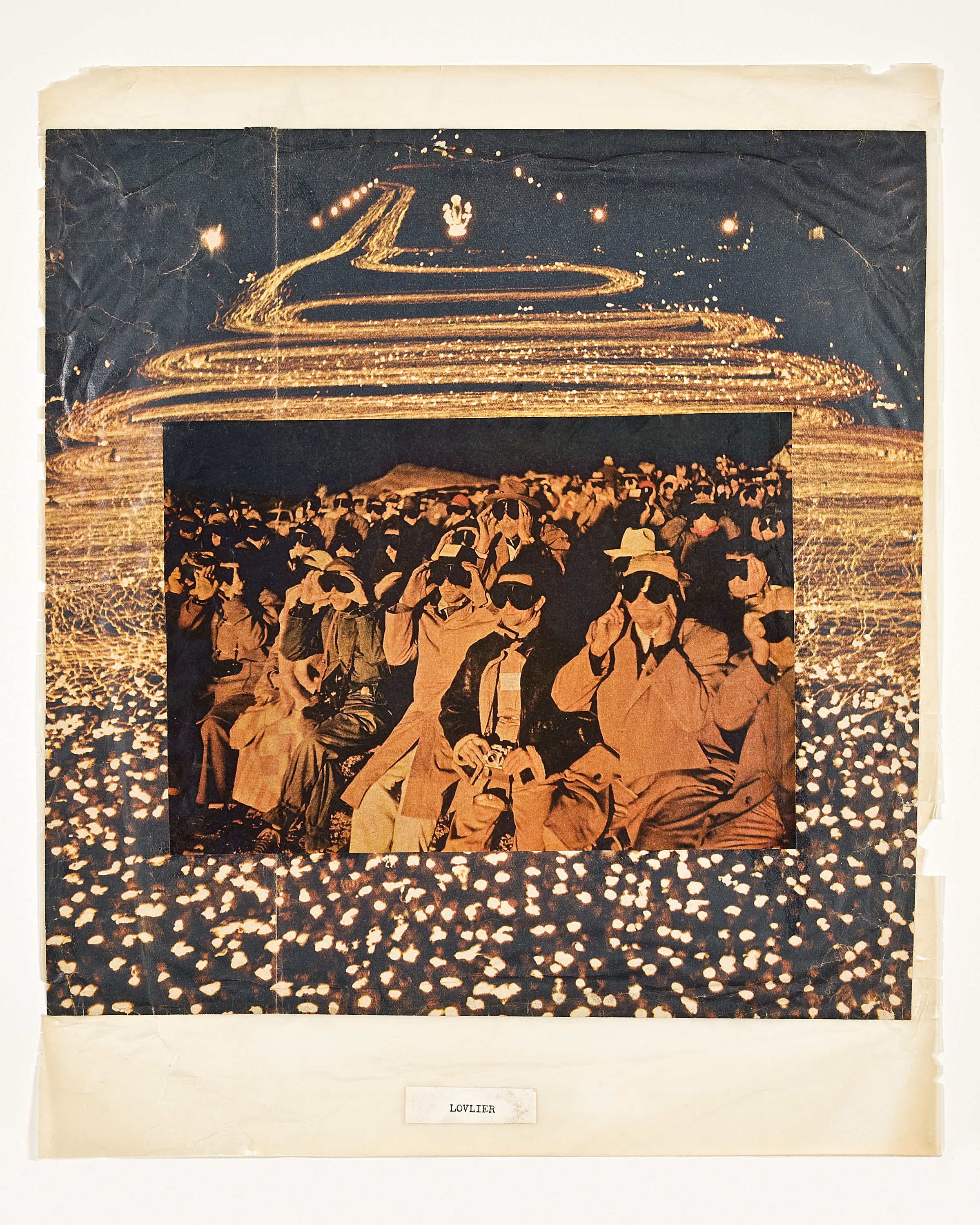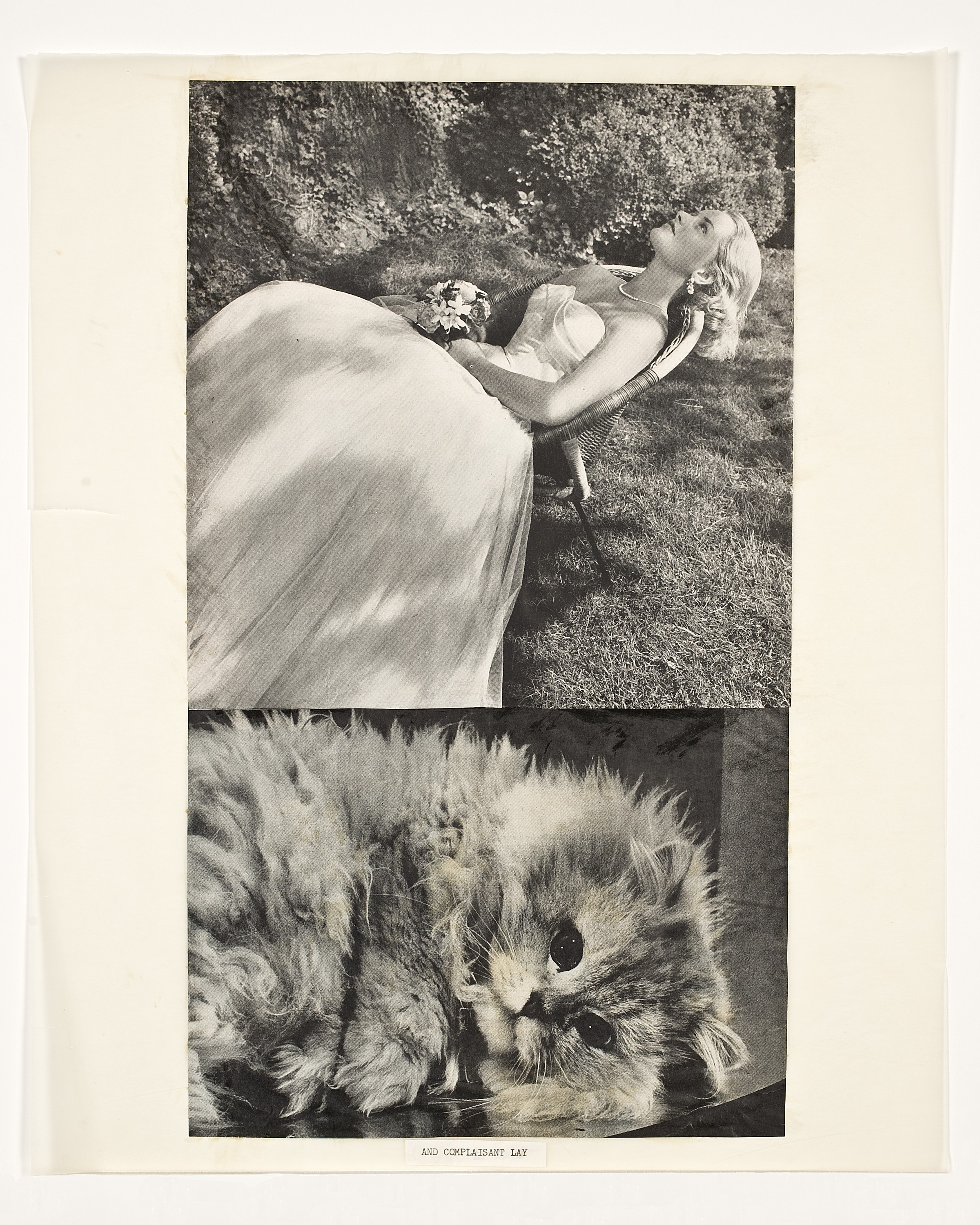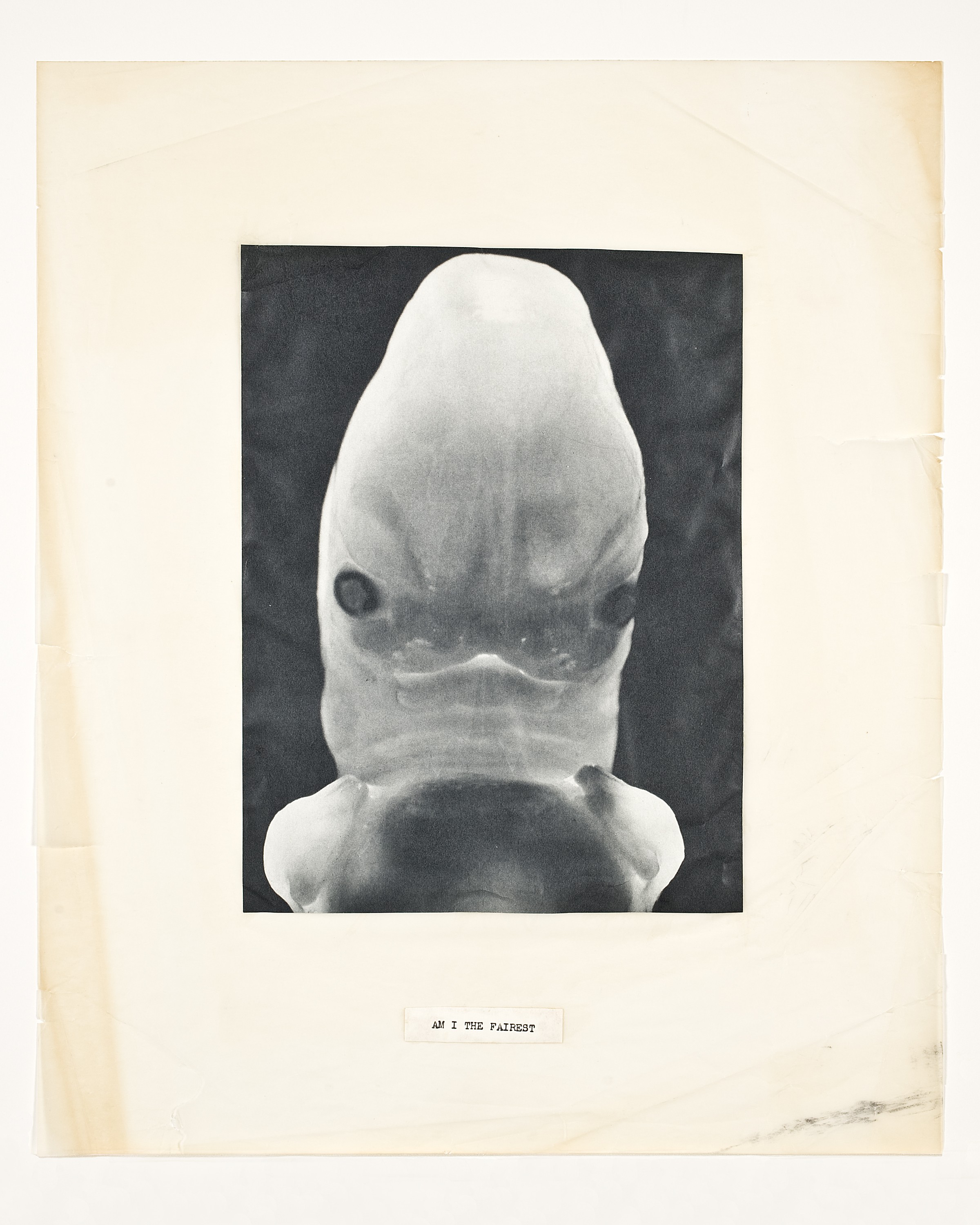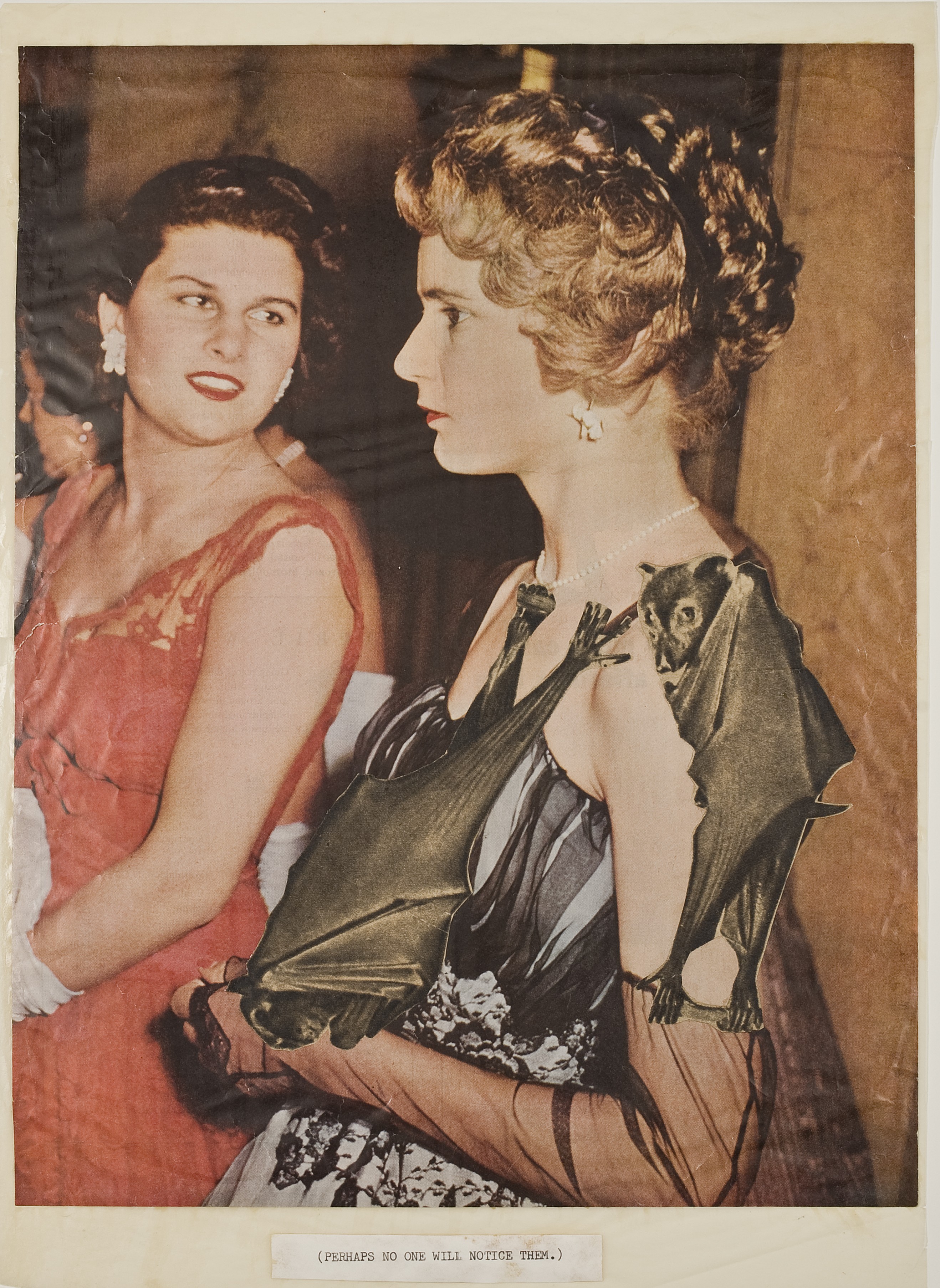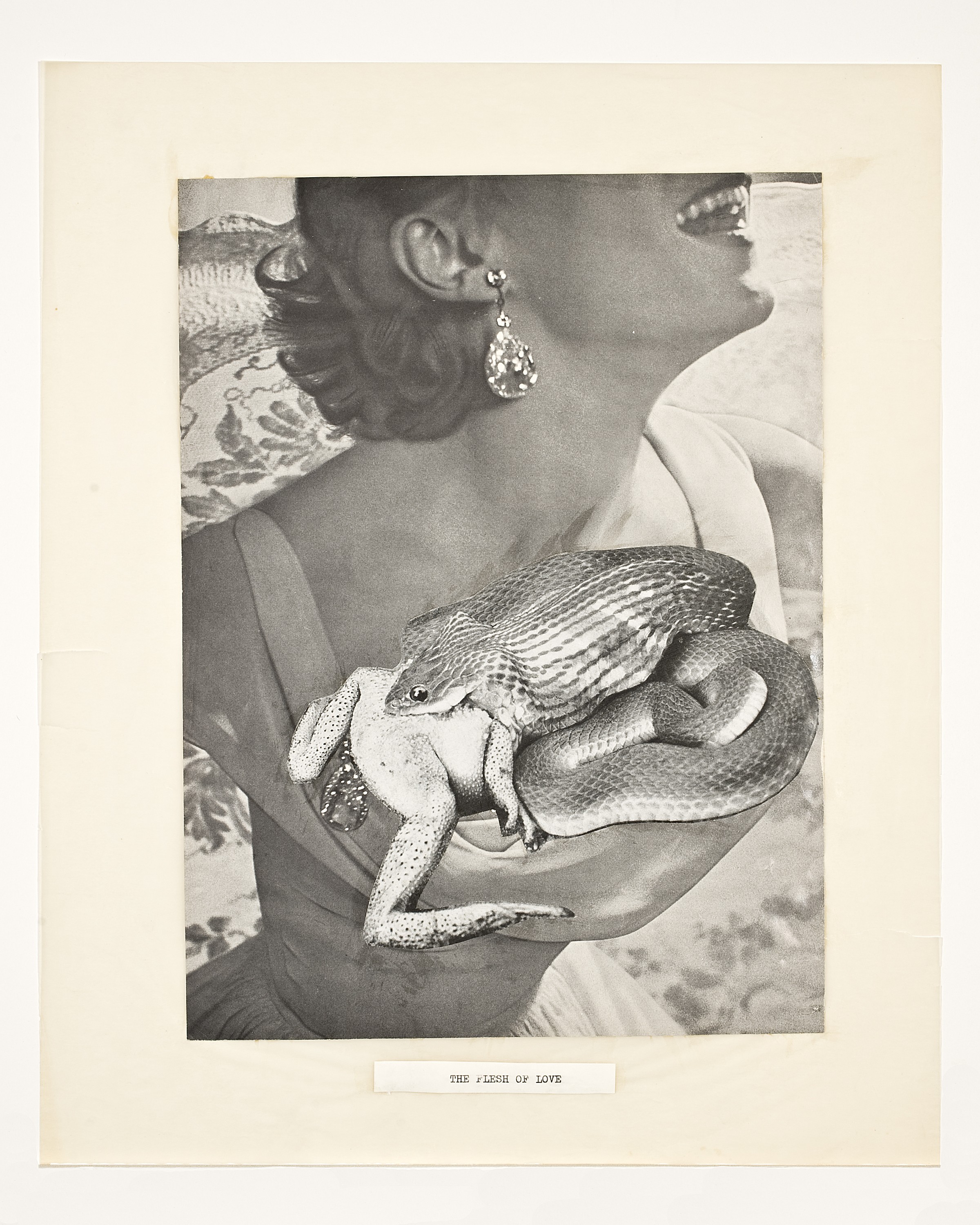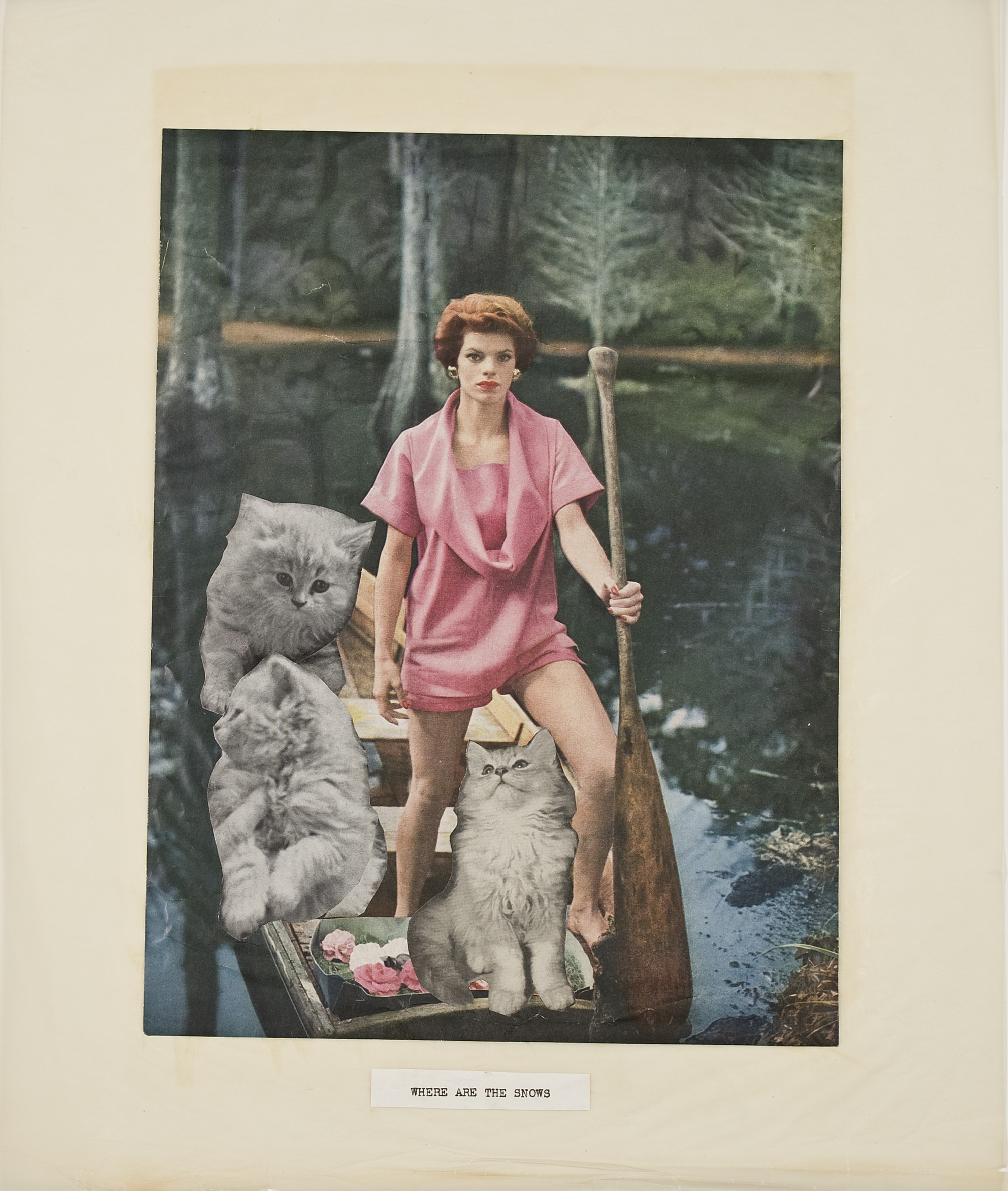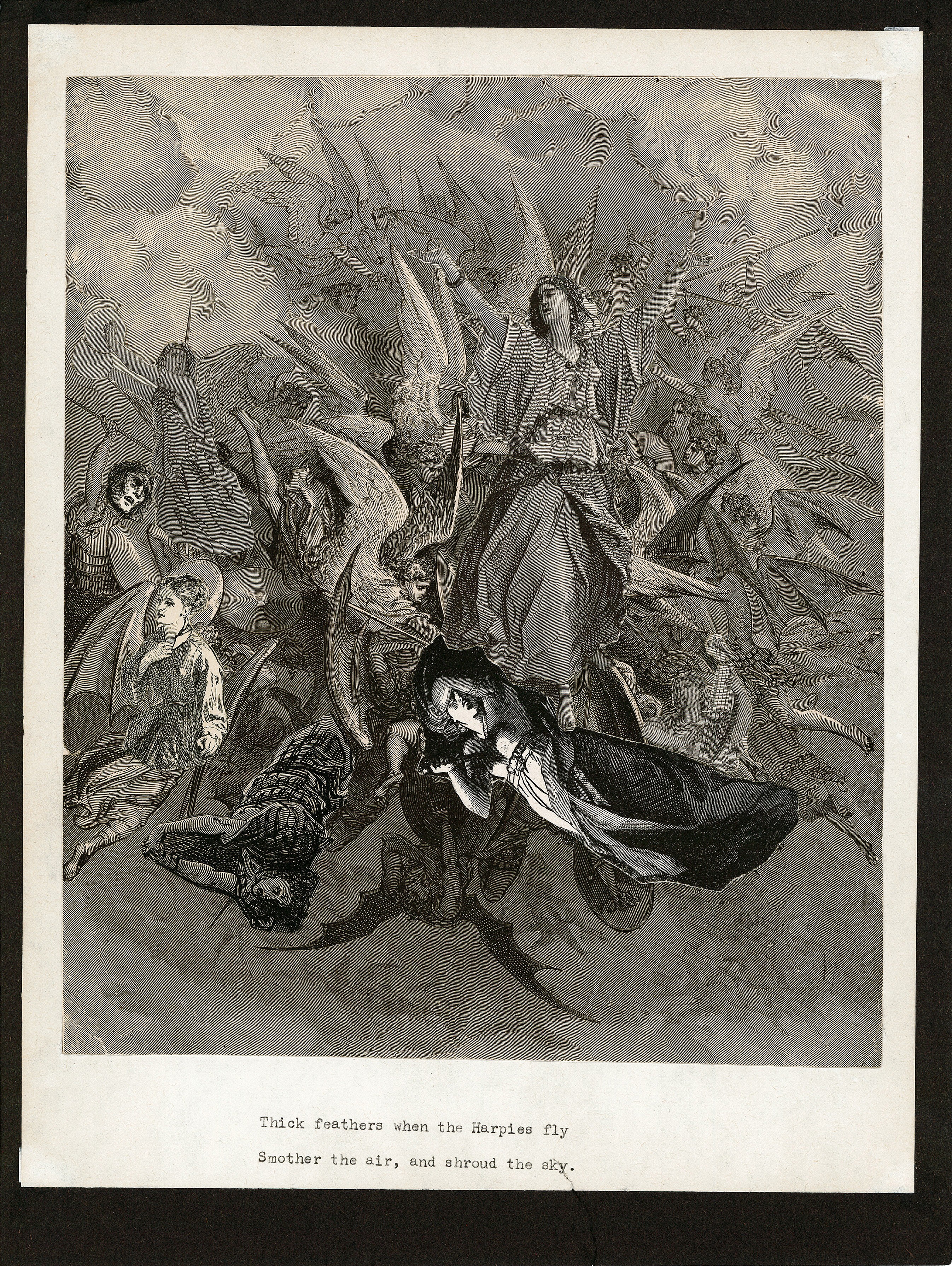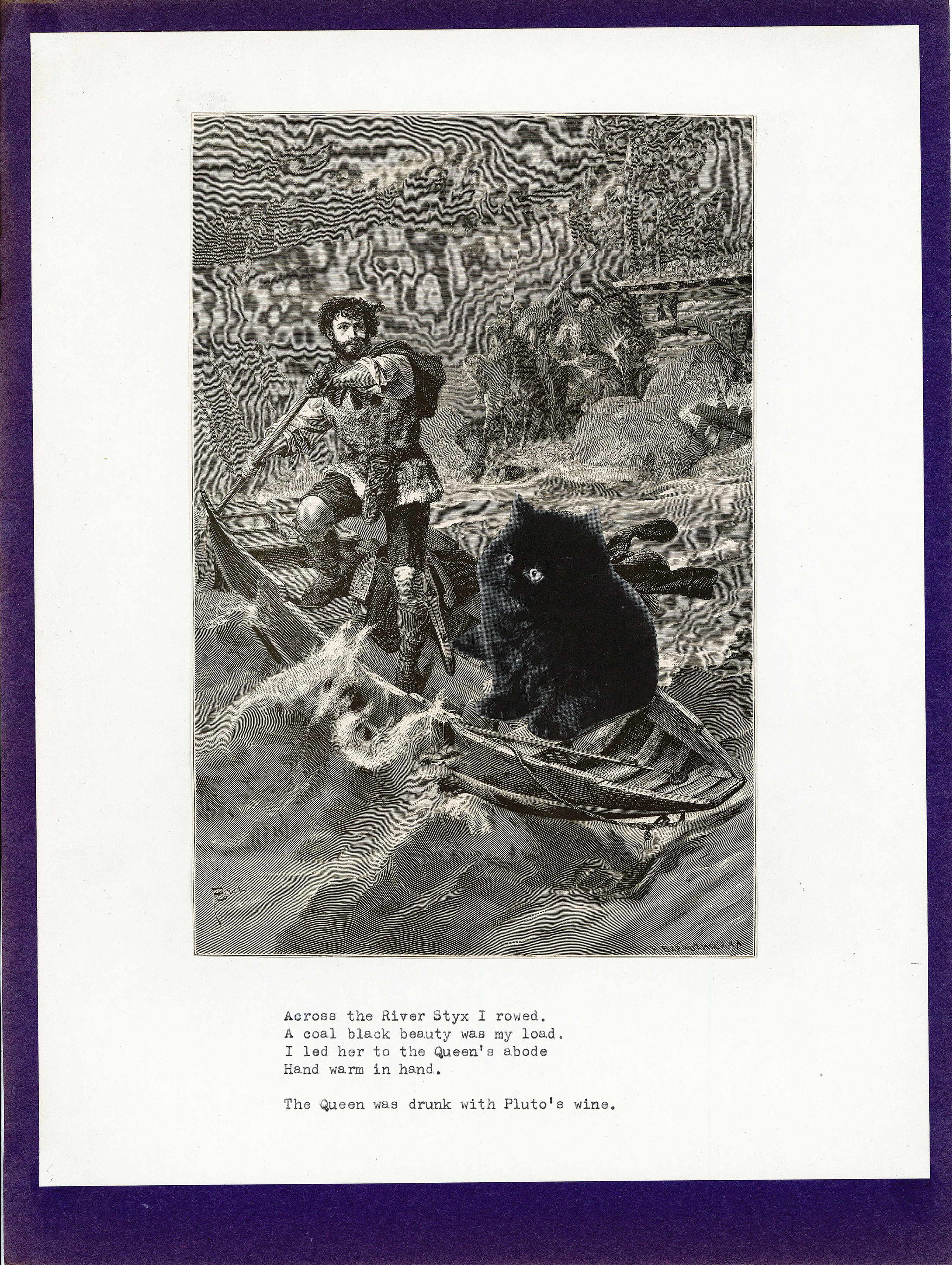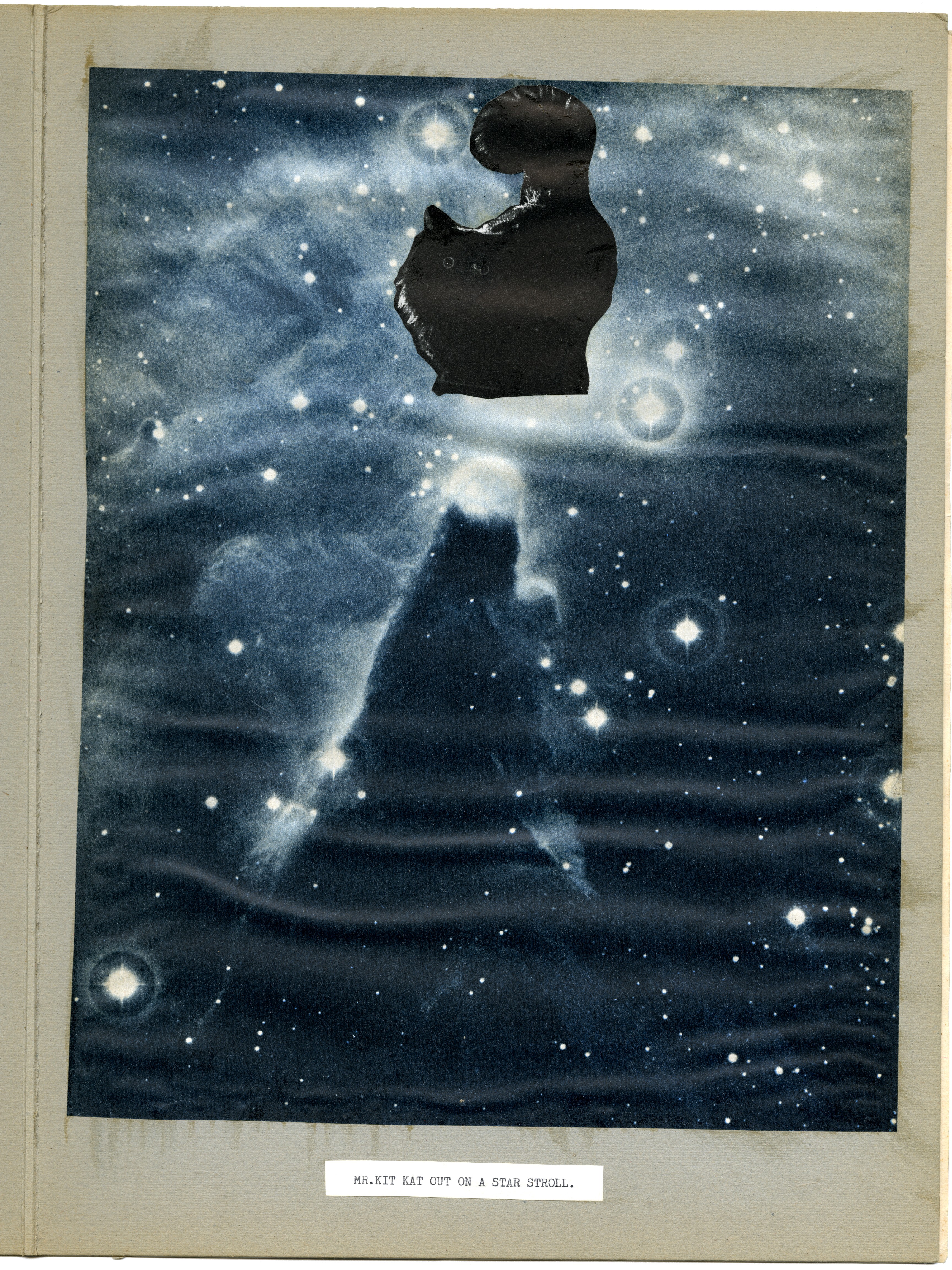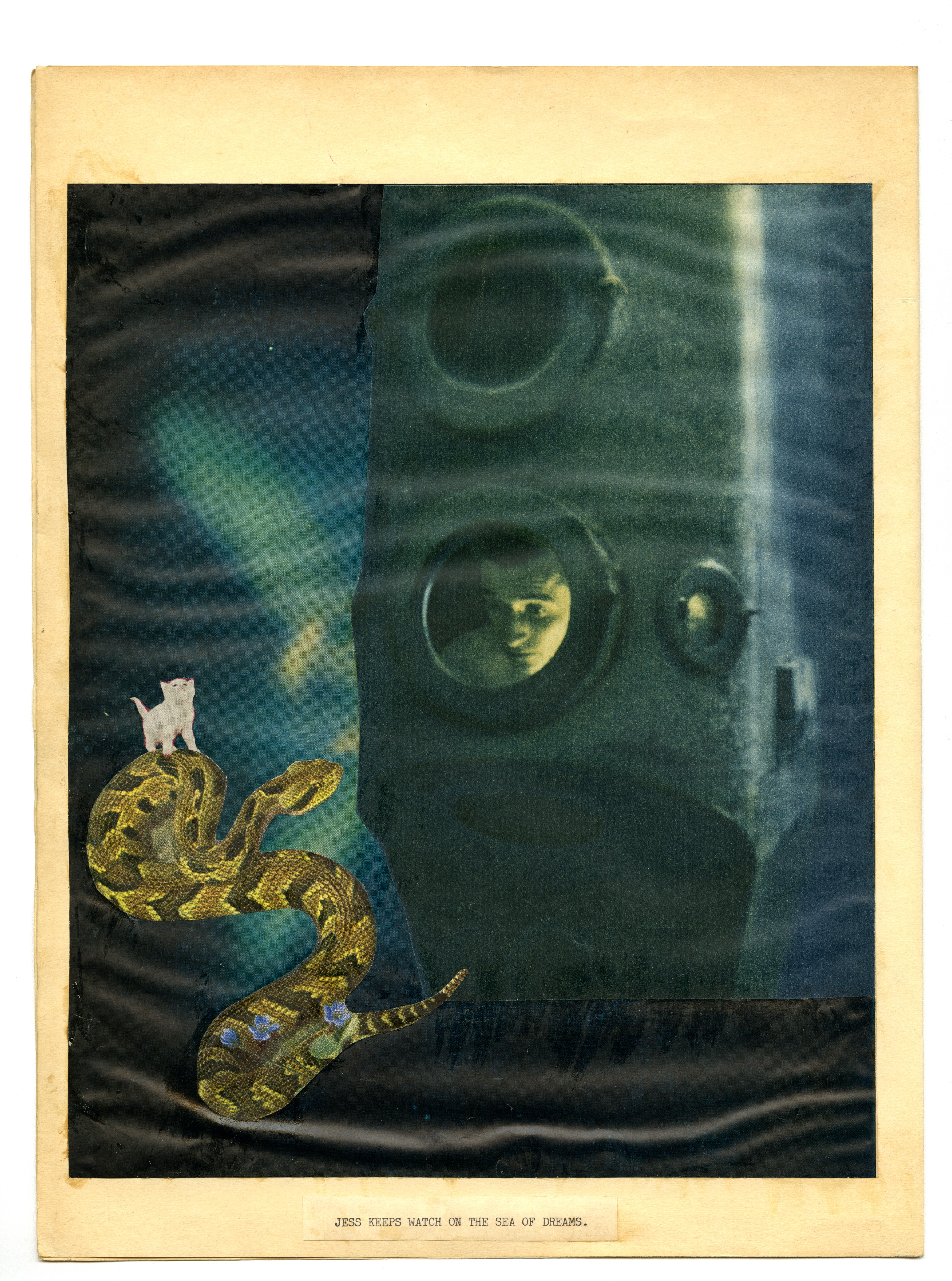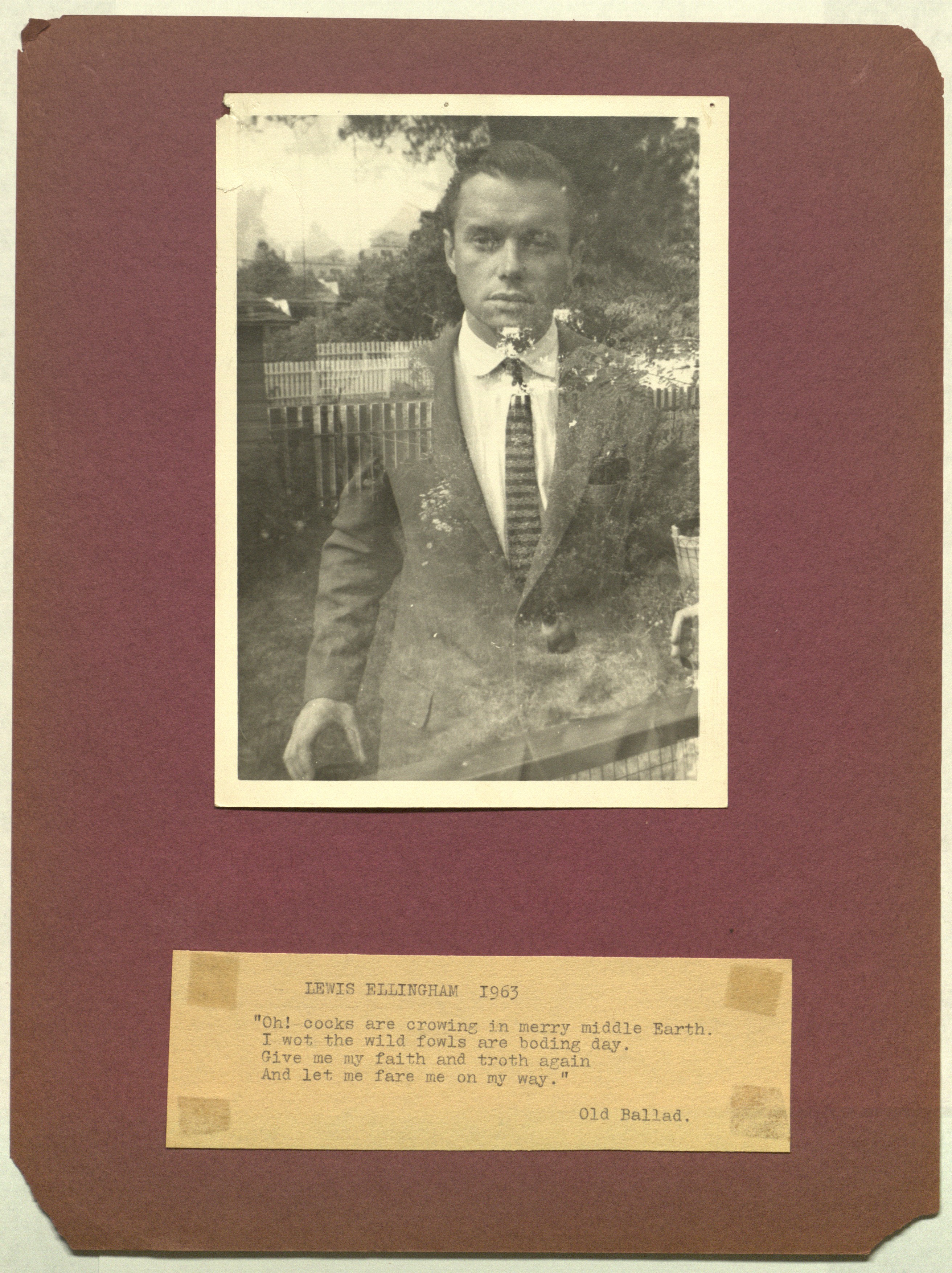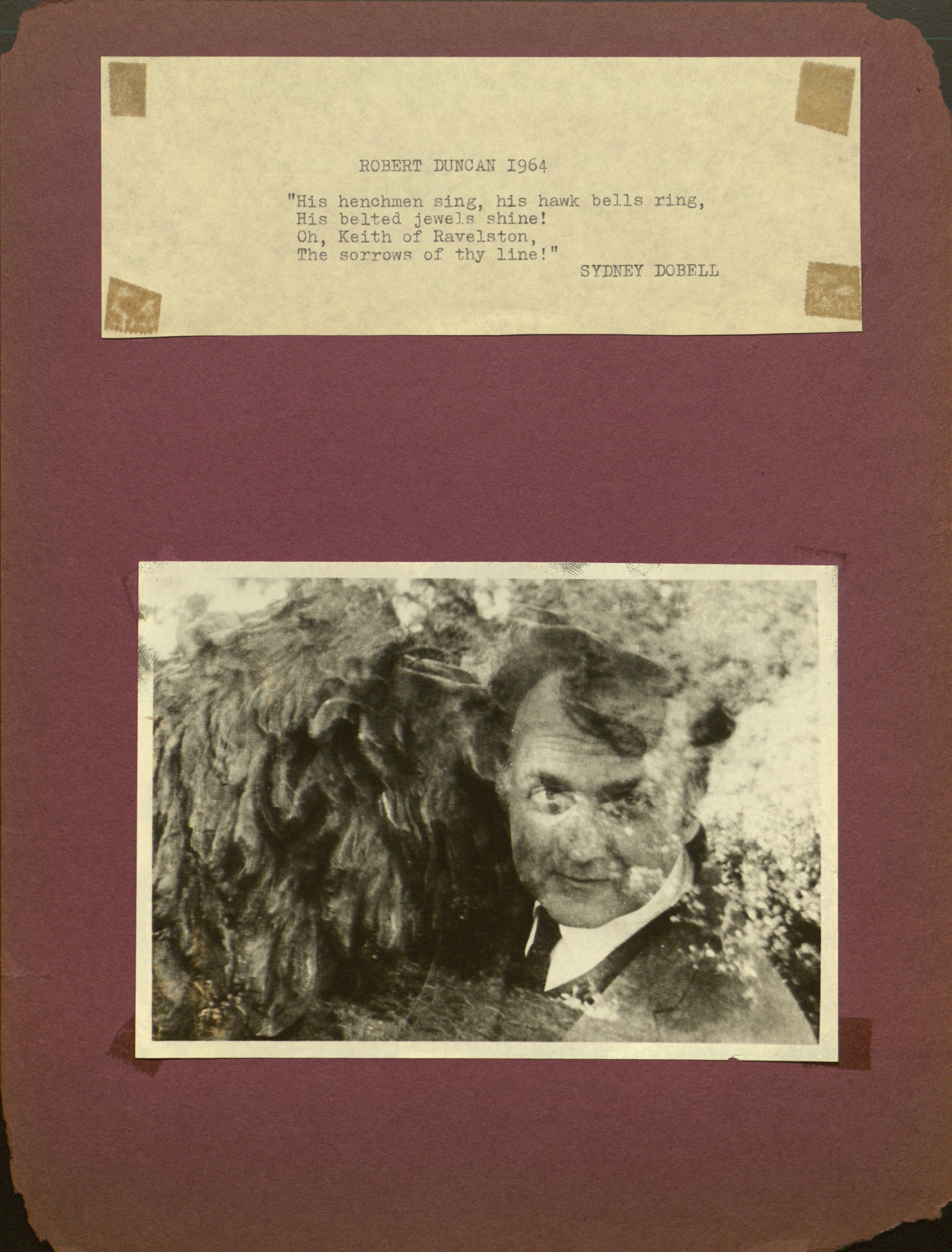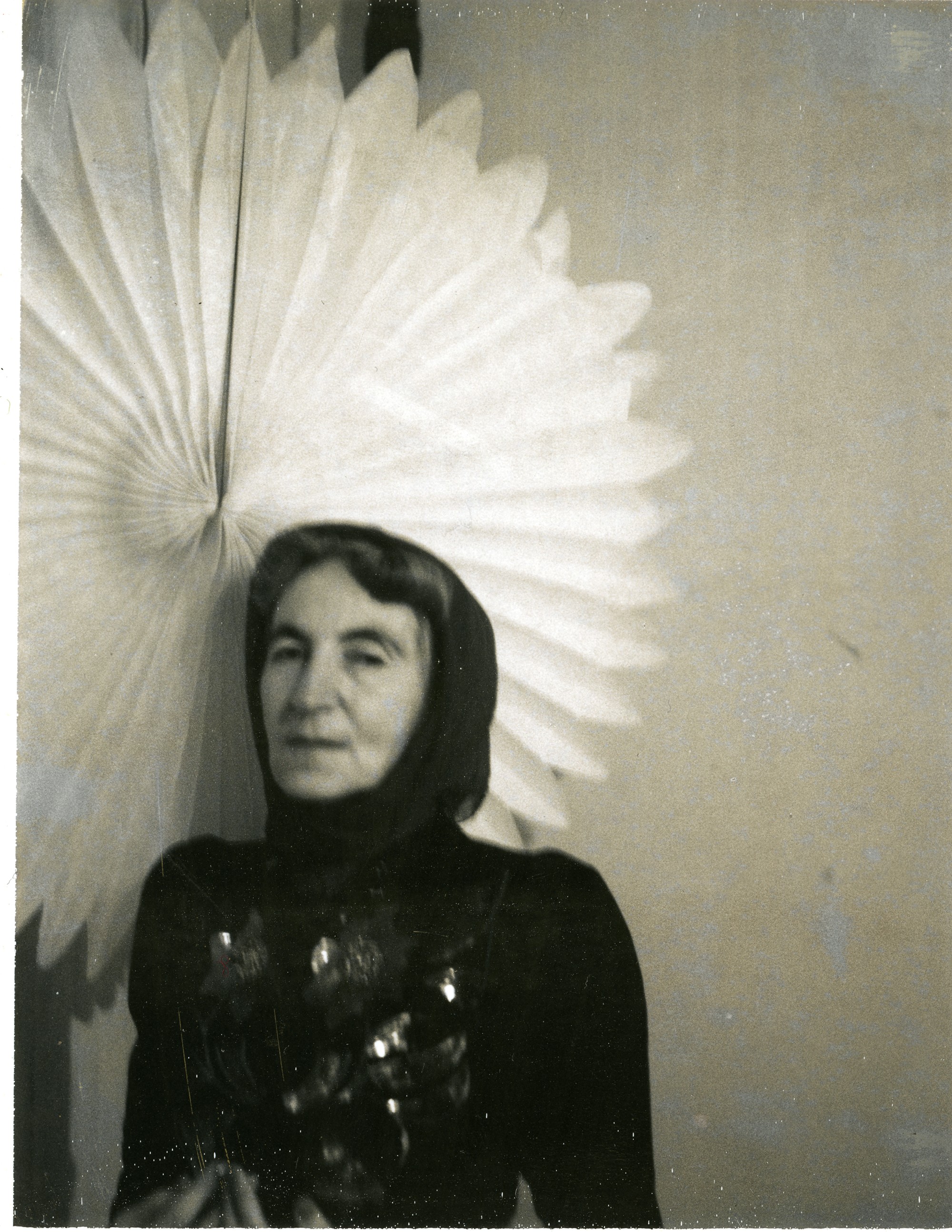The Collages of Helen Adam

Poetry magazine’s Editors’ Blog occasionally features online exclusives. This installment comes from The Collages of Helen Adam, just co-published by Further Other Book Works and Cuneiform Press. Past exclusives can be found here. All images are copyright © the Poetry Collection of the University Libraries, University at Buffalo, The State University of New York and used with permission.
While completing Ghosts and Grinning Shadows: Two Witch Stories, Helen Adam wrote to Robert Duncan that she had created “some pleasing weird collages” for the book, noting her sister’s importance during composition process: “I always know they would work if Pat says, ‘No! No! I can’t bear to look at them!’”[1] Unlike the collages printed in this 1979 work, most of Adam’s collages were uncollected and largely unknown, and yet they provide a needed perspective into her engagement with art, politics, and popular culture. The Collages of Helen Adam brings together for the first time a comprehensive selection of Adam’s artistic expression. For those who know and love her poetry, these visual works will add a new dimension to her poetics. For those unfamiliar with Adam, these collages will provide a playful and engaging entrée into Adam’s world.
Adam (1903–1993), a Scottish-American poet, visual artist, filmmaker, and playwright, took delight and inspiration from the weird, the rogue, and the unconventional. A child prodigy, her first book was published at age twelve and was reviewed in Poetry magazine by Harriet Monroe. As an adult, she moved to the United States with her mother Isabella and sister Pat, eventually landing in San Francisco in the early fifties. Adam’s arrival was almost preternaturally timed, and she swiftly joined the emerging avant-garde communities of the San Francisco Renaissance and Beat Generation, sitting in the front row during the famous Six Gallery reading, chronicled in Jack Kerouac’s The Dharma Bums, during which Allen Ginsberg first read “Howl,” and enrolling in poetry workshops given by Jack Spicer and Robert Duncan. While Adam benefited from arriving on the scene, the scene benefited from her and her family’s arrival, as Duncan admitted: “the Adam family [is] such a special revelation.”[2]
One of Adam’s revelations was the ballad, which she reintroduced to a group previously devoted to free verse. Using this traditional form, Adam frequently upended traditional gender roles. For instance, in the blues ballad “Apartment at Twin Peaks” a suburban housewife prepares a Tupperware party for her girlfriends—with her husband as the main dish. When he protests his imminent demise, the housewife counters by questioning his devotion to the cornerstone trope of masculinity: “Don’t you want to be a good provider?” Unable to disagree, he is eaten.
While Adam upends gender roles in her poetry, she and her sister do so literally in the San Francisco collages by taking scissor to page, cutting out images from popular mid-century magazines like Vogue, Life, and Picture Post. Collages like And Complaisant Lay, which juxtaposes two images of reclining figures, one a woman in a wedding dress, and the other a fluffy kitten, critique the mindless acceptance of societal norms, while Am I the Fairest, which shows an in-utero fetus, and (Perhaps No One Will Notice Them.), which depicts two society women, one with arm-length bats hanging from her shoulder, lambast society’s obsession with beauty, fashion, and image.
In one of the more gruesome collages, The Flesh of Love, the viewer’s gaze, initially focused on the bride’s décolletage, is redirected by pasting over her breasts a snake in the process of swallowing a frog whole. Other collages are playful and humorous, like Where Are the Snows, which shows a Vogue model in a pink romper in the middle of a mangrove swamp, on a mission to find snow. To aid her quest, she has brought with her three outsized kittens. The original messages of the fashion editorial and poem from which the collage takes its title (Rossetti’s famous translation of François Villon’s “Ballade des dames du temps jadis”) are made obsolete in the collage’s comical rendering.
While the ballad-collage In Harpy Land also performs revisionist and feminist work—re-inscribing the poetry of Dante and Milton in a Blakean nightmare where an almighty Harpy Queen rules all—other collage projects point to Adam’s important position within the social fabric of the San Francisco and New York art scenes. The collage gift books given to Robert Duncan and Robert Hershon demonstrate Adam’s generosity and the way she saw art and life as being mutually inclusive. Her friends (and their cats) live out adventures among the stars and in the deep seas in the pages of these homemade collage books.
Likewise, her contribution to the Buzz Gallery’s Poets Show, held in San Francisco in 1964, is revealing of Adam’s role within the San Francisco Renaissance and the value in which she placed her friendships; when the sisters moved to New York shortly after the show, this photo-collage series was one of the only creative pieces Adam brought with her. (The San Francisco collages, in contrast, were left behind in storage.) The Buzz Gallery photo-collages show Adam as a documentarian, taking an active role in archiving and annotating the scene. Each photo-collage contains a portrait of a Bay Area friend, sometimes in eerie double-exposure, paired with lines of poetry ranging from traditional ballads to contemporary writers to lines written by Adam herself for the occasion. Adam’s photo-collages help us remember the larger network of people in a community we often conveniently constrict to a few major players.
As a group, the San Francisco collages, the ballad-collage In Harpy Land, collage gift books, and the Buzz Gallery photo-collages demonstrate the breadth and commonalities of Adam’s visual and written work. It is a pleasure to make them available.
All images are of items from the Poetry Collection of the University Libraries, University at Buffalo, The State University of New York.
Alison Fraser has edited collections of Helen Adam’s work appearing in the Chicago Review and Paideuma...
Read Full Biography


